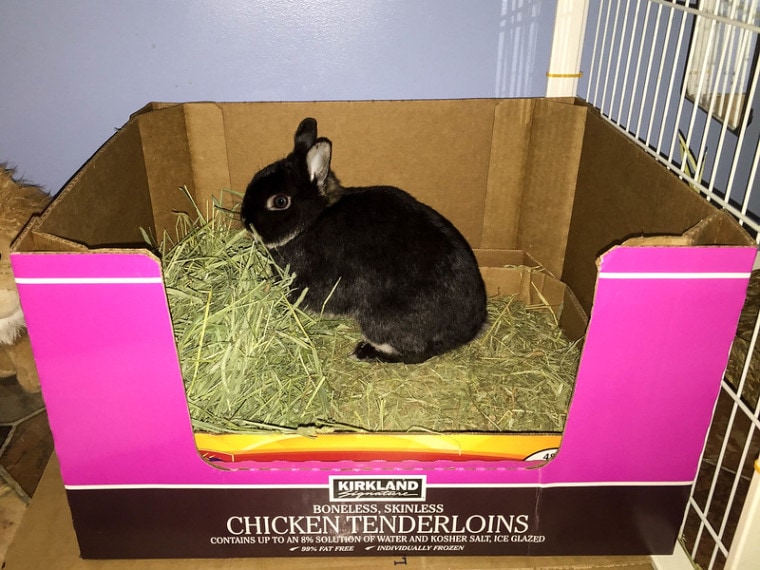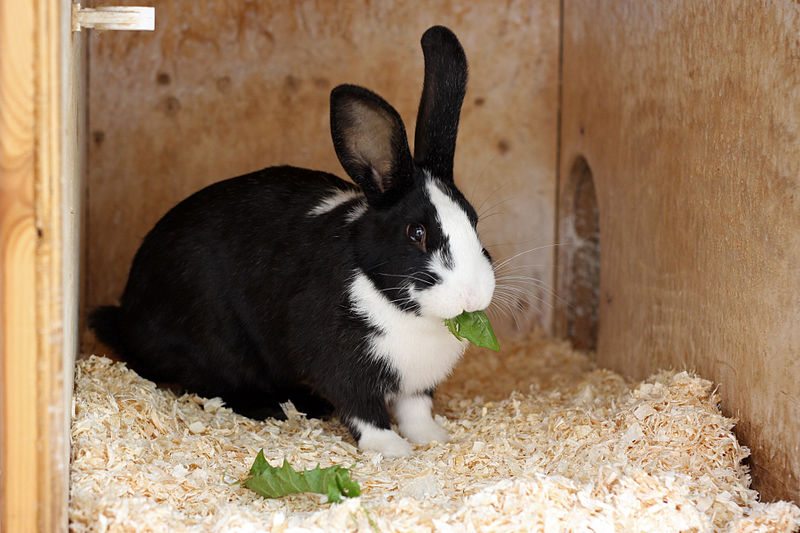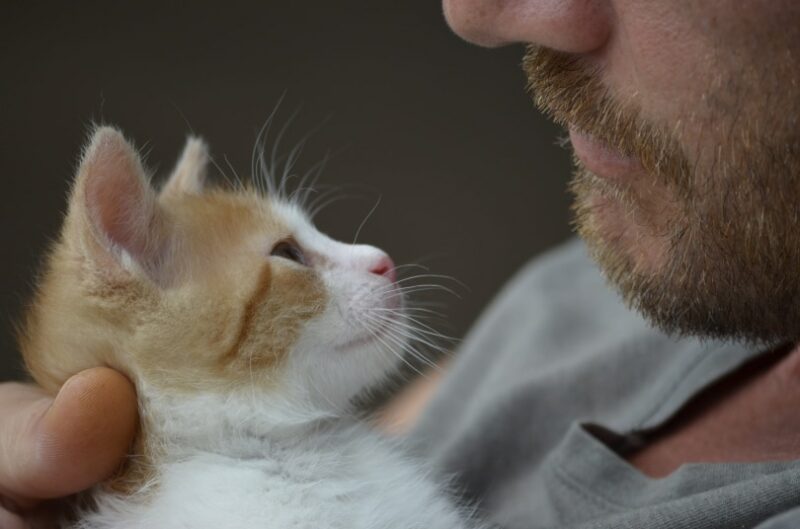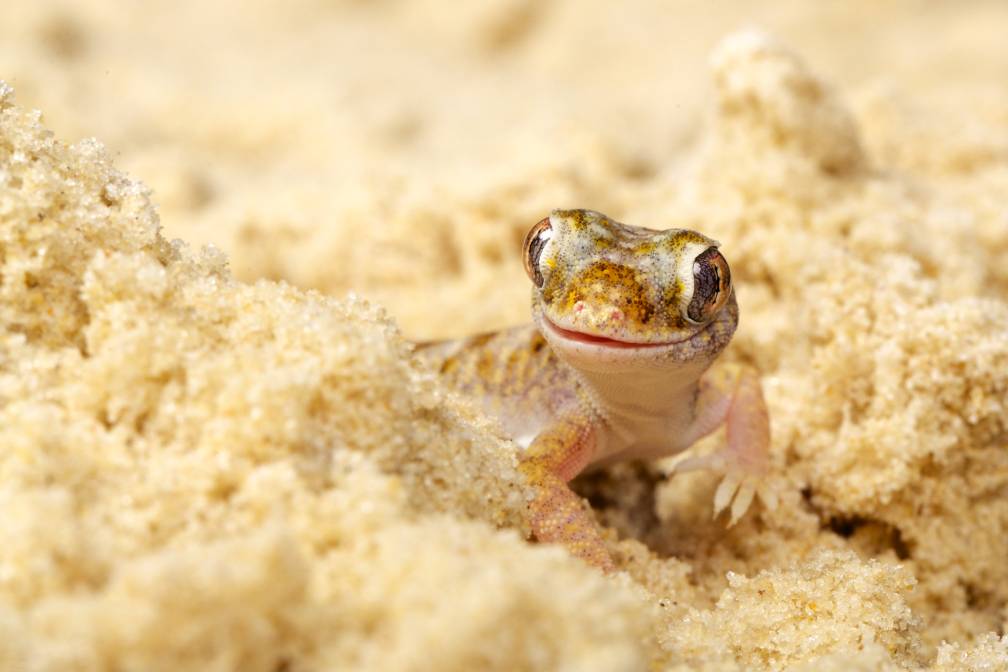
If you’re keeping your rabbit indoors, you might be interested to learn about litter training rabbits. Just like cats, rabbits can be trained to use the litter tray to reduce the mess they make. This is even useful if you keep your rabbit outdoors, as it helps keep the cage clean and tidy and hutch cleaning will be a breeze.
Is it hard to litter train a rabbit?
Since rabbits are naturally clean animals, they prefer to urinate in one or two places anyway, so it’s not hard to teach them what we want them to do. It can take a long time and can be frustrating, just like litter training a cat or toilet training a dog. It’s also worth noting that although urination is easy to train, rabbits tend not to be so careful about where they poop, and they may never have full control over their pellets. Since pellets do not smell too bad and are easy to sweep up, we still think it’s worth litter-training your rabbit!
Benefits of Using a Litter Tray for Rabbits
So, what are the benefits of litter training your rabbit? Well, a rabbit that uses a litter tray to urinate means they’ll make a lot less mess for you to clean up. If they’re reliable using the tray, you can more easily let them roam free without worrying about little messes. Since rabbit urine can smell quite strong, being able to stop them from using your carpet is a huge bonus! It’s also more hygienic for them to use a litter tray, as they’ll be less likely to spend time standing, sitting, and lying in their urine. Extended time in contact with urine can cause sores and ulcers, and even bumblefoot.
How to Litter Train Your Rabbit
1. Preparation for Litter Training a Rabbit
First, you need to consider whether your rabbit can be litter-trained. Although all rabbits can be trained in theory, it’s slightly easier with adult rabbits that have better control over their bowels. It’s also far easier in neutered rabbits, as they will be less likely to feel the need to mark their territory by urinating. If your rabbit isn’t yet neutered, try finding a rabbit-friendly veterinarian who can talk you through the pros and cons.
Next, you’ll need your bunny’s ‘home’ area where they eat, drink, and sleep. This may be a cage or a small room. If the area is large, narrowing it down to reduce your bunny’s options for places to urinate may be a good idea. They’ll still need to have space for food, sleep, water, and exercise though!
You’ll also need a tray and litter. Your tray should be large enough for your rabbit and have high enough sides that urine won’t spill out, but it should be easy for your rabbit to jump into. If you have an older rabbit that may be arthritic, opting for a ramp into the tray may help them to use it. They also like to eat whilst they use the toilet, so opting for a tray with an attached hay rack is a good idea. You can read more about litter box selection here.
If your box comes with a grate over the top to keep the rabbit from the litter, you may need to remove this at first until your rabbit is used to the tray. Some trays can be attached to the walls of your cage. This is a good idea to help it all feel more stable, as your rabbit is unlikely to want to use something that tips when he jumps into the tray!
You’ll also need to fill the litter box with litter. The purpose of the litter is to absorb the urine and negate the smells. It also acts as an attractant in the early stages of training, as your rabbit will likely want to play in or eat the litter. For this reason, make sure you use a non-dusty litter that is non-clumping and doesn’t include pine or softwood chippings, as these can be poisonous even if not eaten. Compressed sawdust is safe, however, and often makes a nice digging tray for the rabbit to use. Hay works well and is often slightly preferred, but does result in them eating the urine-soaked hay, which isn’t very hygienic.
2. Start Small, Work Up
The aim at first is to get your bunny to use the litter tray, even just once, ideally with you watching. The best way to do this is to restrict your rabbit’s choice of areas by temporarily reducing the size of their pen. Then, pay close attention to where your bun naturally decides to urinate and try placing the tray here. Next, you need to wait. This is where it can take some time to litter train a rabbit. You need to be patient, and ideally not distracted, otherwise, you’ll miss the key moment. Instead, enjoy having some quiet time watching your bunny going about his daily business. It’s a great time to get to know their habits, likes, and dislikes.
If you see your bunny use the tray, immediately give them a treat. This should be their favorite thing and something they don’t get all the time. Herbs make a great treat! If they look like they might use another area of the cage (for instance if they lift their tail or head to an empty corner) herd them into the tray, then praise them if they use it. If they urinate anywhere other than the tray, pick them up and place them into the tray to finish their job, then praise them.
Remember to be patient. Just like children and other animals, rabbits can’t tell what we’re asking of them. They learn ‘if I do this, I get rewarded’. But to learn that, they’re bound to test boundaries and make mistakes. After all, at first, it won’t be clear whether the reward is for the urination, for sitting in the tray, or for something else. It’s only after they’ve got it right several times and wrong several times that they can start to make the connection.
3. The Big Wide World
Once your rabbit is reliably using the litter tray in their ‘home’ area, you can remove any temporary barriers to give them more space again. Don’t go immediately to a full run of the house, step up slowly so that they understand where their ‘home’ is and that you still want them to toilet there. You’ll need to set aside a bit more time to watch them when you first extend their run, as they may well have a few accidents at first. Each time, stop them and carry or herd them back to the tray to finish their urinating.
If your rabbit has a large area, consider how far they have to go to get to the toilet. If it’s a long way to go, chances are they’re going to wonder whether it’s worth it, or even get caught short. Having other trays dotted around the house may make them more likely to stick to their training. Again, these should be placed in areas your rabbit has had accidents to increase the chances of him using them. Quiet places are often preferred.
4. Praise, Praise, Praise
Every time you see your rabbit getting it right, praise them. Even if your rabbit has been successfully toilet trained for months, reminding them that they’re doing the right thing every now and again is essential to maintaining their training. Treats are usually best for training any animal, but you know your bunny best. Give them something that they just love.
Rabbit Litter Training FAQs
My bunny uses the litter tray some of the time, but also has an accident. What am I doing wrong?
If your bunny was doing well at litter training but has taken a few steps backward, make sure that you haven’t skipped a step or moved on too quickly. Remember to give positive rewards each time there’s a correct use of the tray, and not to get too cross if there’s an accident. Your bunny has no way to know why you are angry and won’t learn from this.
My rabbit has started having lots of accidents, what’s wrong?
If your rabbit has been using the litter tray for some time and suddenly goes backward, consider whether a medical condition such as urine sludge or a UTI could be causing the problem. A visit to the veterinarian for a check-up (ideally with a urine sample) is a great idea at this point. If the vet says there’s no medical problem, revisit your pet’s routine. Has anything changed? Rabbits are creatures of habit and if their routine is upset, they may change their behavior. Try to settle things back down again. Providing a new tray with new litter, and starting at step one may encourage them to use a box again. Don’t worry, it should be much quicker the second time around!
My rabbit uses the tray, but urine spills over the side. What should I do?
If your rabbit is spraying out of the side of the tray, use a spray guard to catch the urine and redirect it back into the tray. Alternatively, try a deeper tray so that your rabbit has higher sides to catch the urine.
Help! My rabbit is digging in the tray and making a mess!
Don’t worry, it’s very normal for rabbits to dig in the tray, especially with some litters. If this happens, try a different litter or see if your rabbit will use a tray with higher sides or even a covered tray to stop the litter from falling out.
My rabbit uses the tray for urine but not poop. Can I teach him to poop there too?
If you want to teach your rabbit to poop in a tray, you can try to teach them to do this. It’s a lot harder than teaching them to wee in a tray as rabbits spend most of their day pooing. First, make sure you have a hay rack next to the tray and some good litter. You want your rabbit to be safe sitting in the box and eating hay for as long as it takes for him to poop. Reward him when he does. Next, you need to make the area with his tray, his ‘home’ territory, as comfortable and safe as possible so that he doesn’t feel the need to mark his territory with poop.
This means treating it like a child’s bedroom or a dog’s crate and respecting the boundaries. Never drag him out of his home, never force him into it, and never do anything horrible to him in there. This will increase his natural desire to use poo to mark his territory. Make it as safe as possible, and keep up with the positive praise when he gets it right!
Conclusion
Training your rabbit to use a litter box is not difficult, but it does require some patience. It’s important to be understanding with your rabbit during this process and make sure that you aren’t punishing them for not using the litter box until they get the hang of it. Hopefully, our tips will help make litter training your rabbit easy.













